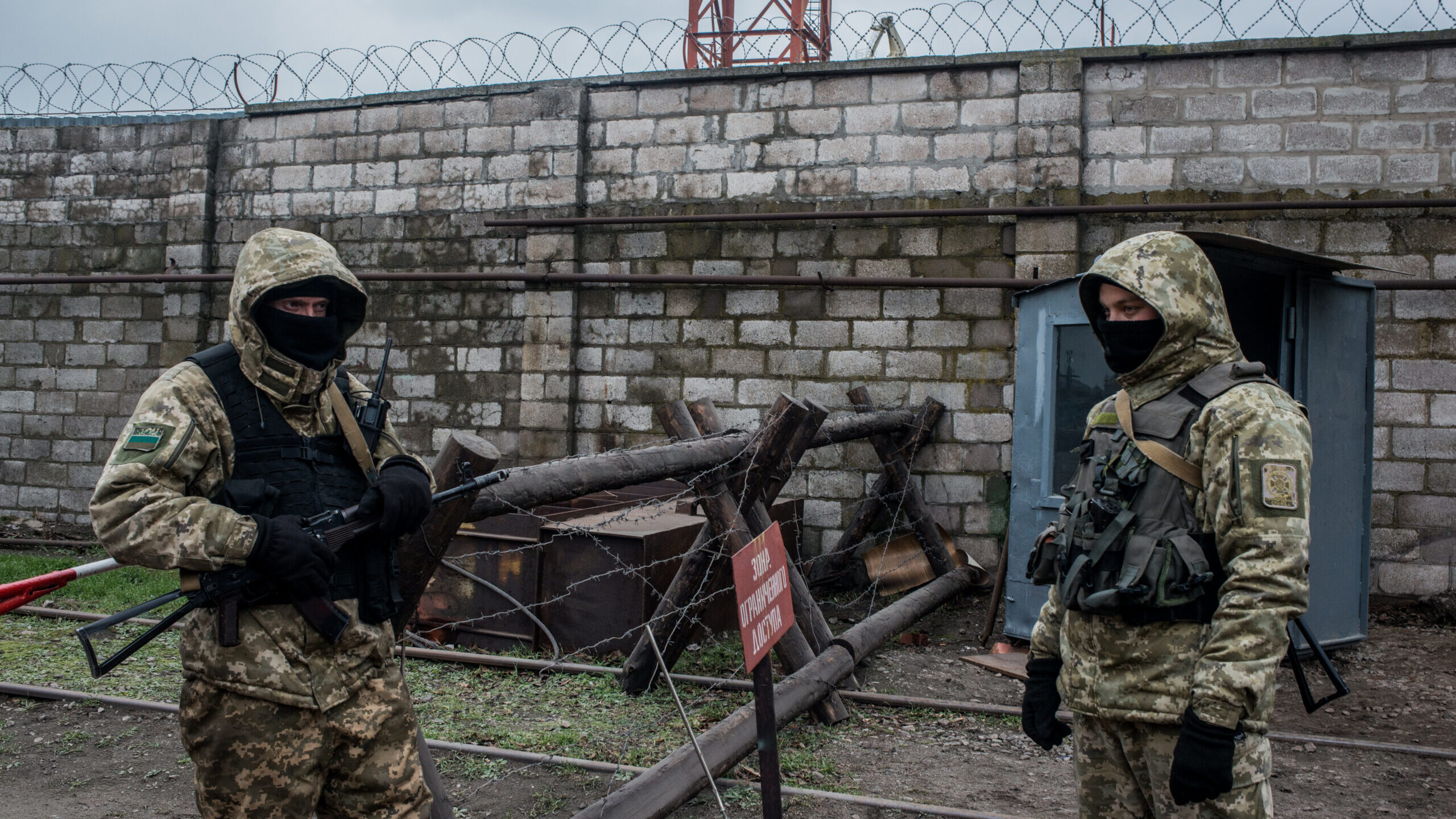
With Russian troops amassed on Ukraine’s eastern border, US and NATO officials are watching nervously what Russian President Vladimir Putin might do next. Will he heed US warnings not to further invade the former Soviet state? Or is a new, widespread bloody offensive for territory looming? In this op-ed, the Heritage Foundation’s Luke Coffey argues that question is an oversimplification, and Putin has many more options on the table.
Ukraine is at a tipping point, and its ongoing national struggle will determine whether its future geopolitical orientation tilts toward the West or Moscow. The outcome will have long-term implications for the transatlantic community and the notion of national sovereignty.
Since 2014, Russia has illegally occupied almost 5% of Ukraine’s landmass and more than half of its coastline. In eastern Ukraine, Russia and Russian-backed separatists continue to propagate a war that has resulted in more than 13,000 lives lost and 30,000 wounded, heavily damaging the Ukrainian economy and slowing Ukraine’s progress toward deepening ties with the West.
Now, Russia is raising tensions again. For the second time in a year, Russia has conducted a large-scale military mobilization along Ukraine’s borders. As many as 175,000 Russian troops are poised to attack at a moment’s notice.
While it is impossible to predict what Russian President Vladimir Putin has planned — and US officials say they don’t know what he’s thinking — any decision may not be as black-and-white as “to invade or not to invade.” The US must be prepared to respond not just to an actual mass offensive as most feared, but a range of scenarios in which the Russians exert pressure in other ways. Some possibilities include:
The non-kinetic scenario: Russia uses the military buildup to try to extract concessions from the West on NATO enlargement. Russia’s strategic goal here is to keep Ukraine distanced from organizations like NATO and the European Union. Russia would also benefit from the long-term integration of Ukraine into Moscow-backed groups like the Collective Security Treaty Organization or the Eurasian Economic Union.
The most effective way for Russia to achieve this goal is by keeping the conflict in eastern Ukraine “frozen”—meaning that the major fighting stops, but localized fighting remains without a conclusive end to the conflict. That means using the troops on the border as political leverage, not as actual invaders.
A limited offensive, to entrench -Russian-backed separatists: A plausible scenario, assuming a lack of US and European resolve, is that Moscow helps the separatists consolidate gains in the Donetsk and Luhansk regions to create a political entity that functions more like a viable state. This would involve the capture of major communication and transit nodes (such as the city and port of Mariupol) and the Luhansk power plant, all of which are under Ukrainian government control. While this could be done in a piecemeal manner, such a move would also require the complete abandonment of any notion of a cease-fire.
More aggressive push for a land bridge to Crimea: Currently, the Russian Federation is connected to Crimea only by a newly built bridge across the Kerch Strait. Ukraine has also blocked Crimea’s main source of fresh water. Connecting Russia to Crimea along the coast would alleviate some of Russia’s logistical challenges, especially as it pertains to fresh water, while turning the Sea of Azov into a Russian lake. However, this would require a sizeable military force breaking through strongly fortified positions along the frontlines of the Donbas and the capture of Mariupol, Ukraine’s 10th largest city.
Large offensive to capture major cities: The most aggressive scenario could involve Moscow’s attempting to re-establish control of the Novorossiya region of imperial times in southern Ukraine. This would create a land bridge between Russia and Crimea, eventually linking up with the Russian-occupied Transnistria region of Moldova. This would require a large-scale mobilization of Russian forces sufficient to take over Odesa (Ukraine’s third-largest city) as well as Mariupol. If successful, this would fundamentally change the geopolitical and security landscape in Eastern Europe in a way not seen since World War II.
A wildcard scenario: Russia stirs political problems in Ukraine’s Budjak region in the Odesa Oblast. The main goal here would be to manufacture a local political crisis that causes problems for the central government in Kyiv. Moscow attempted this a few years ago (see the so-called National Council of Bessarabia). Budjak is only connected to rest of Ukraine by one regional road. Bordering Budjak is Moldova’s autonomous Gagauzia region. This ethnically Turkic, Orthodox Christian, and Russian speaking region has close links to Moscow and is pro-Russian. Domination of Budjak, in addition to Russia’s military presence in Transnistria, would put Moscow in control of a sizeable stretch of Ukraine’s western border. This would also threaten the stability of Odesa.
It should be noted that any scenario involving conventional military operations would also include sophisticated cyberattacks, effective disinformation campaigns to undermine local and international support for Ukraine’s government, and the activation of “little green men” and other political antagonists to subvert local and national government institutions as was done in Crimea in 2014.
As for a timeline regarding any Russian military operation, that’s anyone’s guess. However, the following should be kept in mind: the ground in eastern Ukraine will be suitably frozen (advantageous to offensive operations and problematic for defenders) in early 2022; the Orthodox Christmas is on January 7, and the international community’s attention will be on 2022 Winter Olympics in Beijing starting February 4. Russia invaded Georgia during the opening ceremony of the 2008 Beijing Summer Olympics. Also, the Volga-Don Canal, that connects the Sea of Azov with the Caspian Sea, will freeze over in the coming weeks making it inoperable. Any Russian amphibious assault would most likely require ships from Russia’s Caspian Flotilla using the Volga-Don Canal.
In all of these scenarios, Russia is the aggressor, and Ukraine is the victim. That’s the way it has been since the Russian invasion of 2014.
Modern Ukraine represents the idea that each country has the sovereign ability to determine its own path and to decide with whom it has relations, and how and by whom it is governed. No outside actor (in this case, Russia) should have a veto on membership or closer relations with organizations like NATO. It is in America’s interest that Ukraine remains independent, sovereign and free to choose its own destiny. The US must be ready for whatever comes next.
Luke Coffey is the director of The Heritage Foundation’s Allison Center for Foreign Policy Studies.

